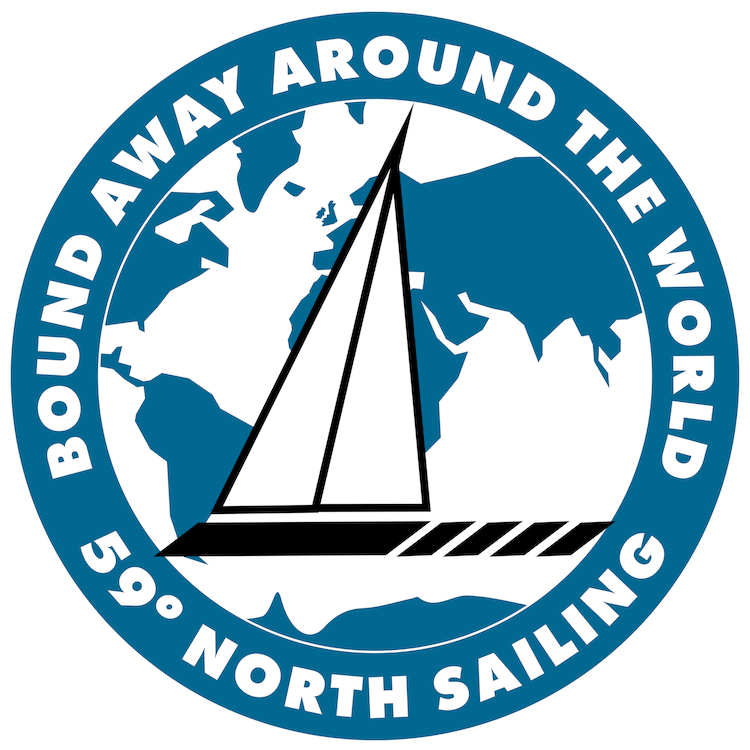Note: This article first appeared in Broadreach's June Newsletter. Check that out here, and learn about the other awesome summer programs Broadreach does in the Caribbean and worldwide.
When I went to work for Broadreach at the Pad in St. Martin, it was the first time I was able to share my love for seeing the world with kids who I immediately identified with – kids away from home, mostly for the first time, experiencing all of the emotional ups and downs that such an experience brings with it. The pangs of homesickness one day followed by the intense, life-giving joy of a tropical sunrise the next. For better or worse, you are forced to remain in the moment. The experience combined my two biggest passions; bringing full circle my childhood as a sailor and my college years as a traveler.
In 2009 I skippered Broadreach’s Arc of the Caribbean program. We took 32 days to sail from the Pad in St. Martin to Trinidad on a 50-foot sailing boat, sailing all the way. We learned how to anchor under sail and maneuver into and out of harbors without turning the engine on.
Our first overnight sail saw us from Montserrat to Ile de Saintes. We departed on Arwen just before sunset, sailing down the coast in the fading light of day and passing nearby Plymouth, getting a close-up look at the destruction caused by the recent volcano that displaced over half the island’s population and leaving behind one of the mellowest and most unique cultures in the Caribbean.
When the stars came out, we used not the compass but the Southern Cross constellation to steer by, visible on the southern horizon in summertime. We were transporting ourselves, in full control of our own destinies, our destination up to us.
This time it was the French Ile de Saintes, a small archipelago south, and part of, the larger Guadeloupe, but a culture and geography unto itself. The students deftly navigated us through the large windshadow behind the big island, and at sunrise we were back in the clear breeze and big waves of the pass to the south. With the trade winds blowing strong, we hardened up on the breeze and aimed for the channel between Ilet a Cabrit and Terre-de-Haut.
“Ready about! Helm’s alee!”
Arwen tacked onto starboard and raced off to the northeast. A few more of these maneuvers and we let the anchor go just a hundred meters or so off the black sand beach to spend the morning relaxing and recovering after the all-night sail. After a swim ashore and a brisk walk past colorful clapboard houses of pinks and blues and greens and we found ourselves sitting in an outdoor café sipping cappuccino and nibbling on baguettes. If not for the palm trees and pastel colors, we could have been in a village in France.
And therein lies the beauty of the Caribbean, and the magic of exploring it under sail. You can fly between islands. But to see the world from the deck of a small sailing boat is to see it once again on a human scale. It’s only 65 nautical miles as the crow flies from Montserrat to Ile de Saintes – a half-hour plane ride, if that – and yet it took us over ten hours, traveling along at not much more than a walking pace. At once you understand just how and why each island developed its own unique culture; until very recently those distances were vast.
--
The more time you spend at sea the more you come to understand the two different worlds we live in. The modern – with its instant information and communication networks and frantically quick transportation systems (and by the way, if you don’t believe in teleporting, you've never been on a trans-continental flight) – and the human. By which I mean the non-mechanical world in which things operate on a scale comprehensible to us.
Mia and I first crossed the Atlantic in our 35-foot sailboat we call Arcturus in 2011, sailing out of the Chesapeake Bay and north to Nova Scotia. From Canada, we sailed for Ireland – twenty-three days later we made landfall in Crookhaven, on the Emerald Isle’s far southern coast, just inland from the famous Fastnet Lighthouse. Though there is a definite adjustment period, you quickly forget the world you’ve left behind. Life boils down for a time to the essentials – a warm bed after a cold night watch, a hot cup of coffee at two in the morning and a meal to fill your belly in the company of the ones you love. And then upon landfall, when you smell the smell of the earth, it’s as if you are smelling it for the first time in your life. Smoke from a cottage chimney, fresh grass growing unhindered on the rocky hillsides, horse fields and wildflowers. These smells combine to form real feelings, emotions buried within you that you’d somehow forgotten over that period spent so close to the sea, and at least for me, I come to realize that humans are meant to remain on the earth.
--
And with that in mind, I’ll continue exploring. I love the sea, but I don’t define myself as a sailor. For me, chasing horizons is about seeing what lies beyond them. Not in the philosophical sense, but in the sense that there are new worlds, new cultures over those horizons ripe for exploring.
Sailing – or long-distance running or cycling, both of which I am equally passionate about – is about the challenge of getting past those horizons under your own effort and keeping your eyes open along the way. Travel on a human scale.


